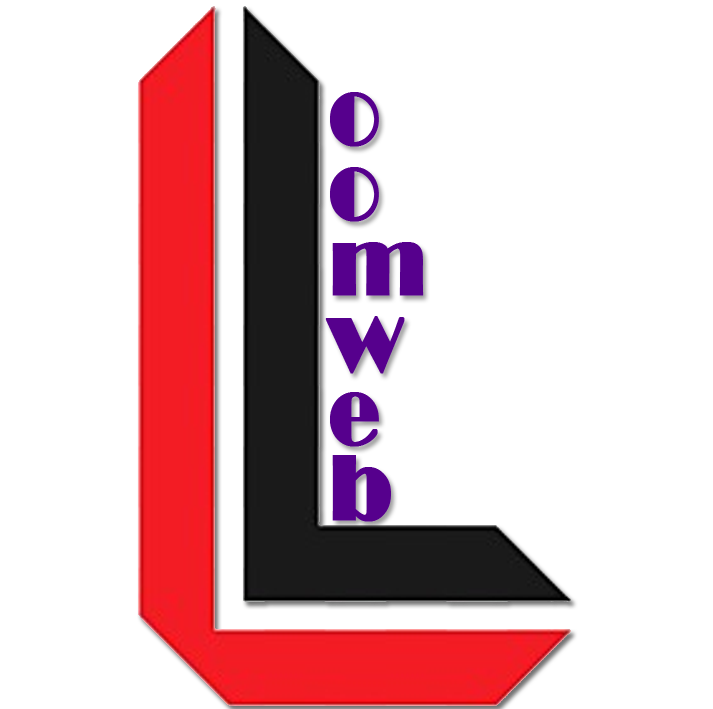Manhattan Personal Injury Lawyer: Navigating the complex legal landscape of personal injury in Manhattan requires experienced and dedicated legal representation. This guide explores the intricacies of personal injury law in this bustling city, from initial consultation to potential trial, offering insights into the processes, strategies, and ethical considerations involved in securing just compensation for victims of accidents and negligence.
We delve into the various types of cases handled by Manhattan personal injury lawyers, including car accidents, slip and falls, medical malpractice, and construction site injuries. Understanding the nuances of each case type, the methods for building a strong case, and the strategies for effective negotiation and settlement are crucial for achieving successful outcomes. The complexities of evidence gathering, working with expert witnesses, and managing client expectations are also addressed.
Client Acquisition Strategies

Securing clients in the competitive Manhattan legal market requires a multi-pronged approach combining traditional and digital marketing strategies. A well-defined plan, focusing on targeted outreach and consistent brand building, is crucial for success. This involves leveraging the power of online visibility alongside strategic offline efforts to reach potential clients effectively.
Effective marketing methods for attracting clients in Manhattan are diverse and require a tailored approach. The high density of legal professionals necessitates a clear differentiation strategy to stand out from the competition. This requires careful consideration of the target audience and the most effective channels to reach them.
Targeted Advertising Campaigns
Targeted advertising campaigns are essential for reaching specific demographics and individuals likely to require the services of a personal injury lawyer. These campaigns should leverage data-driven insights to maximize their impact and return on investment. For instance, a campaign targeting individuals injured in construction accidents might utilize s related to construction injuries, scaffolding accidents, and worker’s compensation in online advertising platforms like Google Ads. Another example could involve a campaign focused on motor vehicle accidents, utilizing location targeting to focus on areas with high traffic incidents and employing visually compelling ads showcasing the firm’s commitment to client success. These campaigns can also be tailored to specific age groups and socio-economic backgrounds, refining the messaging to resonate with their particular needs and concerns.
Building a Strong Online Presence, Manhattan personal injury lawyer
Establishing a robust online presence is paramount for attracting clients in today’s digital landscape. This involves optimizing the firm’s website for search engines (), ensuring it ranks highly in relevant search results. Regularly updating the website with fresh, informative content, such as blog posts on relevant legal topics, will improve its and engagement. Furthermore, a strong social media presence across platforms like LinkedIn, Facebook, and even Instagram (using professional and informative content) can help reach a wider audience and build brand awareness. Online reviews and testimonials are also critical; actively encouraging satisfied clients to leave positive reviews on platforms like Google My Business and Yelp can significantly boost the firm’s credibility and attract new clients. Finally, utilizing online legal directories and listing services can enhance visibility and broaden the reach of the firm’s services.
Negotiation and Settlement: Manhattan Personal Injury Lawyer
Negotiating a fair settlement in a personal injury case requires a strategic approach that balances aggressive advocacy with a realistic assessment of the case’s strengths and weaknesses. Successful negotiation hinges on understanding the factors influencing settlement offers and employing effective communication and persuasion techniques. This involves a thorough understanding of the legal landscape and the opposing party’s motivations.
Effective negotiation strategies involve a multifaceted approach. A strong understanding of the client’s injuries, medical expenses, lost wages, and pain and suffering is crucial. This forms the basis for establishing a reasonable demand. Presenting a compelling narrative that humanizes the client’s experience and demonstrates the impact of the injury on their life is also essential. Furthermore, effective negotiation involves skillful communication, active listening, and a willingness to compromise while protecting the client’s best interests. This often includes exploring alternative solutions, such as structured settlements, to meet the client’s needs.
Assessing Case Strengths and Weaknesses
A comprehensive evaluation of a personal injury case’s strengths and weaknesses is critical before entering negotiations. Strengths might include clear liability, significant damages, compelling medical evidence, and a sympathetic client. Weaknesses could involve issues like comparative negligence, lack of strong evidence, or pre-existing conditions that complicate the injury claim. A thorough analysis involves reviewing all available evidence, including police reports, medical records, witness statements, and photographs. This allows for a realistic assessment of the case’s potential value and informs the negotiation strategy. For example, a case with strong photographic evidence of the accident scene and clear witness testimony supporting the client’s version of events would be considered a strength. Conversely, a lack of clear evidence regarding liability, or the presence of pre-existing conditions that could have contributed to the injury, would represent a weakness. This analysis helps in setting realistic expectations and determining the best approach to negotiation.
Factors Influencing Settlement Offers
Several factors significantly influence the settlement offers made in personal injury cases. These include the severity and nature of the injuries, the extent of the damages (medical bills, lost wages, pain and suffering), the strength of the liability evidence, the jurisdiction’s legal precedents, and the insurance company’s risk tolerance. The insurance company’s evaluation of the case’s potential costs and the likelihood of a favorable verdict at trial significantly impact their willingness to settle. For instance, a case involving severe injuries with substantial medical expenses and clear liability is more likely to receive a higher settlement offer than a case with minor injuries and questionable liability. Furthermore, the jurisdiction’s legal climate, including caps on damages or specific rules regarding pain and suffering awards, also plays a crucial role. Insurance companies often have specific internal guidelines and algorithms to assess risk and determine appropriate settlement offers. These factors all contribute to the complexity of the negotiation process.
Common Types of Personal Injury Cases in Manhattan

Manhattan, a bustling metropolis, sees a high volume of personal injury cases each year. These cases stem from a variety of incidents, each presenting unique legal challenges and evidentiary requirements. Understanding the common types and their specificities is crucial for anyone navigating the complexities of personal injury law in the city.
Car Accidents
Car accidents are a leading cause of personal injury claims in Manhattan. The high density of traffic and pedestrians contributes to a significant number of collisions, ranging from minor fender benders to severe, life-altering crashes. Legal challenges often involve determining fault, particularly in multi-vehicle accidents or situations with unclear liability. Evidence in car accident cases typically includes police reports, witness statements, photographs of the accident scene and vehicle damage, medical records documenting injuries, and potentially expert testimony from accident reconstruction specialists. Determining the extent of damages, including medical expenses, lost wages, and pain and suffering, is also a key component.
Slip and Falls
Slip and fall accidents, often occurring on public or private property, constitute another significant category of personal injury cases. These cases hinge on proving the property owner’s negligence in maintaining a safe environment. Legal challenges revolve around establishing the existence of a hazardous condition, proving the property owner’s knowledge of the hazard (actual or constructive), and demonstrating a causal link between the hazardous condition and the plaintiff’s injuries. Crucial evidence includes photographs of the accident scene, witness testimonies, maintenance records of the property, and medical documentation of the injuries sustained. Establishing the extent of negligence and the resulting damages are vital for a successful claim.
Medical Malpractice
Medical malpractice cases involve injuries caused by a healthcare professional’s negligence or deviation from the accepted standard of care. These cases are often complex and require expert medical testimony to establish the breach of duty and the causal link between the malpractice and the resulting harm. Legal challenges frequently involve proving the standard of care, demonstrating a deviation from that standard, and establishing a direct causal relationship between the deviation and the plaintiff’s injuries. Essential evidence includes medical records, expert medical opinions, and potentially witness testimonies from other healthcare professionals involved in the patient’s care. Establishing the extent of damages, including medical expenses, lost wages, pain and suffering, and potential future medical needs, is also crucial.
Construction Accidents
The construction industry in Manhattan, with its numerous high-rise buildings and infrastructure projects, presents a high risk of workplace accidents. These cases often involve complex legal issues related to worker’s compensation, third-party liability, and the identification of responsible parties. Legal challenges frequently include determining the cause of the accident, identifying negligent parties, and proving the extent of the worker’s injuries. Evidence typically includes OSHA reports, witness statements, photographs of the accident scene, and medical records. Establishing the responsible parties and the resulting damages is paramount.
Pedestrian Accidents
Pedestrian accidents in Manhattan are common due to the high volume of pedestrian traffic and vehicle congestion. These cases often involve determining liability, particularly in situations where the pedestrian and driver share responsibility. Legal challenges center on proving negligence on the part of the driver or other responsible party, and establishing the pedestrian’s injuries. Evidence commonly includes police reports, witness statements, photographs of the accident scene, and medical records. The severity of the pedestrian’s injuries significantly impacts the damages awarded.
Client Communication and Management

Effective communication and client management are paramount to a successful personal injury practice in Manhattan. Building strong relationships with clients, managing their expectations, and keeping them informed throughout the legal process are crucial for positive outcomes and client satisfaction. This involves a proactive and organized approach to ensure transparency and build trust.
A well-defined system for client communication and management minimizes misunderstandings, reduces stress for both the client and the legal team, and ultimately contributes to a smoother and more efficient legal process. This includes regular updates, clear explanations of legal complexities, and readily available channels for communication.
Client Communication System
A robust communication system should incorporate multiple methods to cater to diverse client preferences and needs. This ensures that all clients feel heard and informed throughout the case.
- Initial Consultation: A detailed initial consultation sets the tone for the attorney-client relationship. This should include a thorough explanation of the legal process, fees, and expected timeline. The client should leave feeling confident and well-informed.
- Regular Updates: Clients should receive regular updates on the progress of their case, preferably via email and phone calls, depending on the client’s preference. These updates should be concise, informative, and avoid legal jargon. For example, a weekly email summarizing key developments is a good practice.
- Accessible Communication Channels: Multiple channels for communication should be available, such as email, phone, and a secure client portal for document sharing. This ensures accessibility and allows clients to choose their preferred method of contact.
- Prompt Response Times: Prompt responses to client inquiries are essential. Aim to respond to all communications within 24-48 hours. This demonstrates professionalism and respect for the client’s time.
Managing Client Expectations and Concerns
Managing client expectations is crucial to prevent disappointment and maintain a positive attorney-client relationship. This involves setting realistic expectations about the timeline, potential outcomes, and the complexities of the legal process.
- Realistic Timelines: Clearly communicate the potential length of the legal process, acknowledging that unforeseen delays can occur. Providing a realistic timeline, along with explanations for any potential delays, helps manage client expectations.
- Potential Outcomes: Discuss the potential outcomes of the case honestly and transparently, including both positive and negative scenarios. This prepares the client for various possibilities and avoids unrealistic optimism.
- Open Communication about Concerns: Encourage clients to express their concerns and questions. Actively listen to their concerns and address them promptly and thoroughly. This fosters trust and strengthens the attorney-client relationship.
- Regular Check-ins: Schedule regular check-in calls or meetings to discuss the progress of the case and address any emerging concerns. This proactive approach helps maintain open communication and prevent misunderstandings.
Building Trust and Rapport with Clients
Building trust and rapport is foundational to a successful attorney-client relationship. This involves demonstrating empathy, professionalism, and a genuine commitment to the client’s well-being.
- Empathy and Compassion: Show empathy and understanding towards the client’s situation. Acknowledge the emotional toll of a personal injury case and offer support. For instance, offering to explain complex medical terms in simple language demonstrates empathy.
- Professionalism and Competence: Maintain a high level of professionalism in all communications and interactions. Demonstrate competence and expertise in handling personal injury cases. This can involve providing regular updates and explaining legal strategies clearly.
- Personalized Attention: Treat each client as an individual with unique needs and concerns. Avoid a standardized approach and tailor communication and interactions to the specific circumstances of each case. This shows the client they are valued.
- Accessibility and Responsiveness: Be readily available to answer client questions and address their concerns promptly. This demonstrates a commitment to providing excellent service and builds trust.
Securing fair compensation after a personal injury in Manhattan demands a strategic and comprehensive approach. From understanding the intricacies of legal procedures to building a strong case and navigating negotiations, the expertise of a skilled Manhattan personal injury lawyer is invaluable. By understanding the process, clients can confidently pursue their claims, knowing they have a dedicated advocate fighting for their rights and well-being.
Securing competent legal representation after a personal injury in Manhattan is crucial. The complexities of personal injury law are similar across states, and understanding the process is key, whether you’re looking for a Manhattan personal injury lawyer or need to find resources like those available for an injury lawyer Louisville KY. Ultimately, finding the right attorney, regardless of location, is vital for a successful outcome in your case.
This is especially true in the demanding legal landscape of Manhattan.
Finding the right Manhattan personal injury lawyer is crucial for navigating the complexities of legal proceedings. The process can be similar in other major cities, and understanding the nuances is key; for example, if your accident occurred in Seattle, you’d want to seek representation from a qualified injury lawyer Seattle WA. Ultimately, securing experienced legal counsel, whether in Manhattan or elsewhere, significantly impacts the outcome of your case.
Securing competent legal representation after a personal injury in Manhattan is crucial. The process can be complex, regardless of location; for instance, finding the right advocate is just as important in Denver, as you might discover when researching options like a personal injury lawyer Denver offers. Ultimately, finding a skilled Manhattan personal injury lawyer who understands your specific needs is paramount for a successful outcome.



